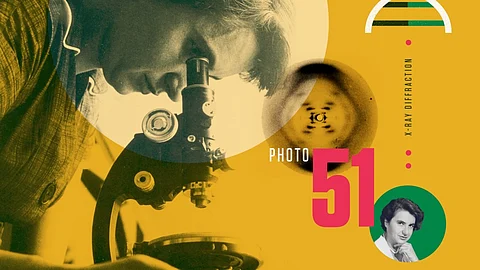Her colleague Maurice Wilkins, without her knowledge or consent, shared this image with James Watson, who, along with Francis Crick, was working on modeling DNA at Cambridge University. This photograph, along with Franklin’s unpublished data included in a report by Max Perutz, gave Watson and Crick the evidence they needed to construct their now-famous double helix model of DNA, which they published in Nature in April 1953. [3] While Watson, Crick, and Wilkins were awarded the 1962 Nobel Prize in Physiology or Medicine, Franklin, who had died in 1958, was not recognized. The Nobel Committee does not award prizes posthumously. [4]
By the time the double helix model appeared in print, Dr. Rosalind Franklin had moved to Birkbeck College, where she conducted pioneering research on the tobacco mosaic virus (TMV). Her TMV findings showed that the virus's genetic material lay along the central axis, contradicting the prevailing theory at the time. She also began work on the polio virus, collaborating with Aaron Klug, who later received a Nobel Prize in 1982 for extending their research on virus structure. [5]


